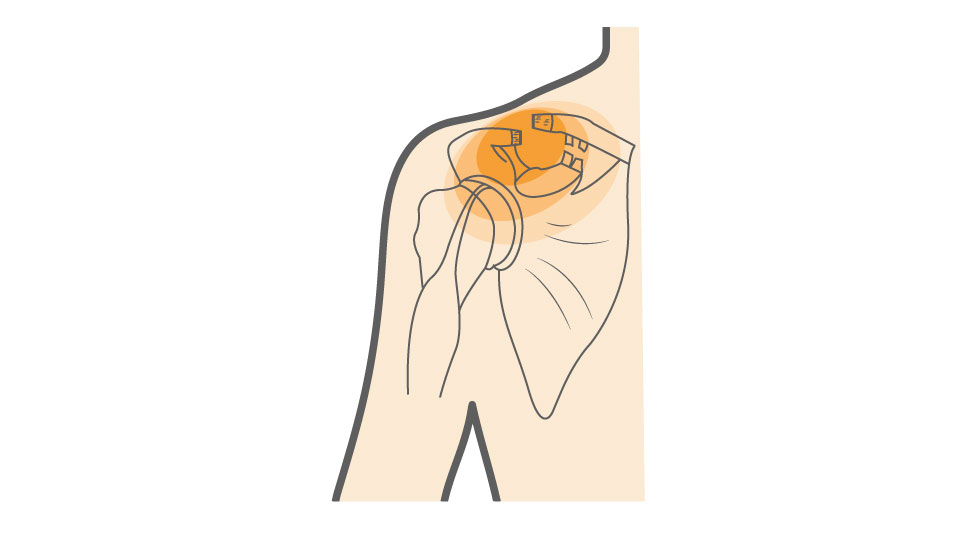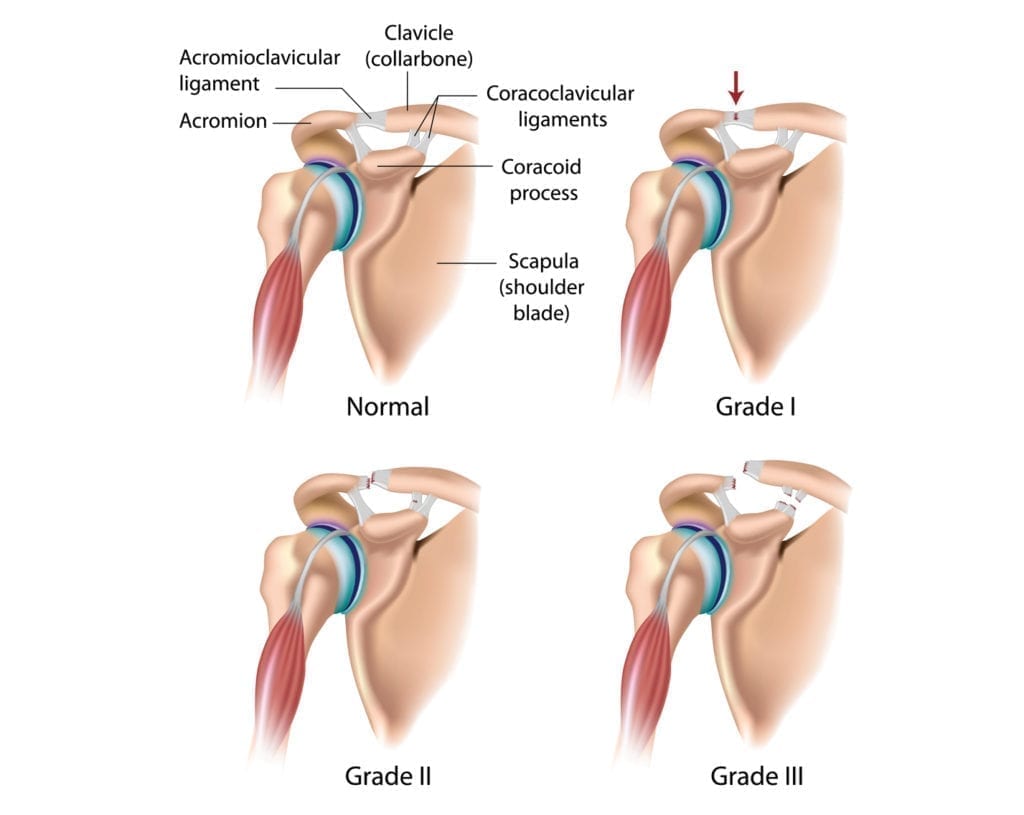The acromioclavicular joint (AC joint) is formed where the clavicle (collarbone) meets the acromion. A capsule and two key ligaments stabilize this joint. An acromioclavicular joint injury typically results from a direct impact to the shoulder. Depending on the ligament damage, the shoulder separation may range from mild to severe, the degree of AC separation.
An AC separation can occur in six different degrees:
- Type I: The AC ligament is sprained or slightly torn but still intact. The joint may be slightly out of place. This is the most common type of shoulder separation.
- Type II: The AC ligament is torn completely through, but the coracoclavicular ligaments are unharmed.
- Type III: The AC joint is completely separated. The AC ligament and the coracoclavicular ligaments are torn. The collarbone injury may cause visible elevation.
- Type IV-VI: These rarer and more serious acromioclavicular joint injuries involve severe displacement or tearing.



